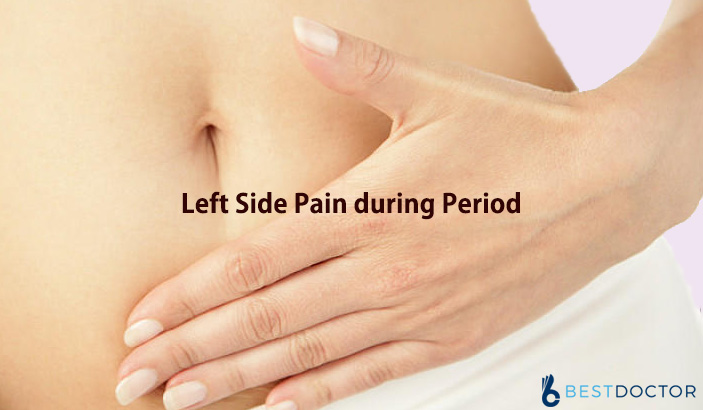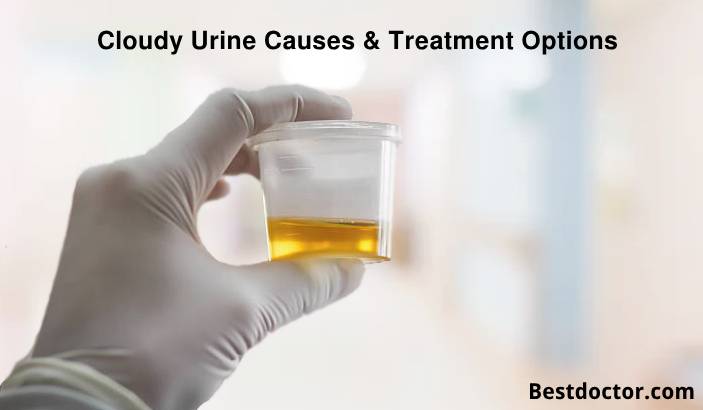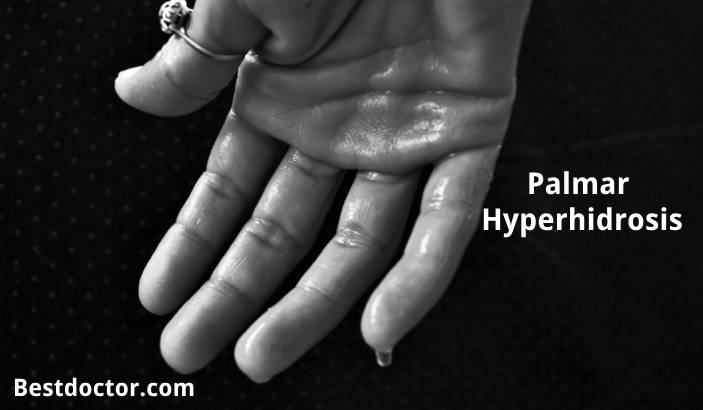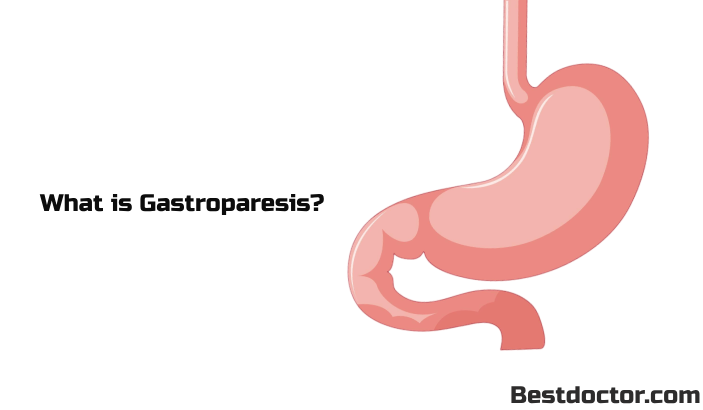What Is Menstruation?
Menstrual cycle is physiological changes that take place during the reproductive stage in females. The duration between beginning of one period to the beginning of the next one is called a Menstrual Cycle. Beginning of menstruation is called Menarche.
Menstrual cycles occur at an interval of 21-35 days, average duration being 28 days. A period lasts for about 3-5 days. Menstruation ceases at the age of about 45-50 years. This is known as Menopause. Menstrual cycle is a physiological, cyclic uterine bleeding due to shedding of the endometrium. This physiological process of uterine bleeding is called Menstruation (Period).
Menstrual discharge consists of fragments of endometrium and vaginal epithelium, prostaglandins, blood and mucus, certain enzymes and bacteria. Painful periods are more common in younger females and tend to become lesser with increase in age.
Menstrual Pain Can Be Described As
- Spasmodic
- Localized at lower abdomen but may also be present on left or right side.
- Pain often radiates to the lower back or thighs.
- Abdominal pain may be associated with nausea, vomiting and loss of appetite during periods.
- Pain in few females is often debilitating and may disrupt normal day-to-day activities.
- In severe cases, chills, pallor, diarrhea and fainting may also be present.
- Pain may be acute or chronic depending upon the cause.
Causes Of Left Sided Abdominal Pain During Periods
Painful menstruation is called Dysmenorrhea. Dysmenorrhea can be primary or secondary.
Primary Causes For Abdominal Pain During Periods
1. Psycho-Somatic Factors
Anxiety just before and during periods tend to trigger pain.
2. Anatomical And Functional Abnormality Of The Myometrium (Middle Layer of Uterine Wall)
Structure and function of myometrium varies in different females. Irregular thickening and hyper-peristalsis in this layer is responsible for abdominal pain during periods.
3. Hyperactivity Of The Nerves Of Uterine Wall.
Axons innervating the uterus travel in the hypogastric nerves and pelvis, abdominal wall at or below the umbilicus, and including the bladder hyperactivity
4. Role Of Prostaglandins In Abdominal Pain
Prostaglandins are hormones responsible for regular menstrual cycles in females. When endometrium sheds, levels of prostaglandins become higher. Therefore, it is assumed that abdominal pain during periods can also be attributed to high levels of prostaglandins or increased sensitivity of uterine wall to these prostaglandins.
5. Role Of Endothelin
Endothelin is an amino acid peptide produces normally by endothelium, which is the inner lining of blood vessels. Endothelin is responsible for contraction of the myometrium. Endothelin promotes action of prostaglandins.
6. Role Of Vasopressin
This is a hormone. In females, vasopressin increases synthesis of prostaglandins and is therefore indirectly a cause of abdominal pain during periods.
7. Role Of Platelet Activating Factors
PAF is a potent phospholipid. These are responsible for platelet activation and aggregation in a normal individual. They have a vasoconstrictor property and are therefore responsible for stimulation of myometrial contractions.
These causes mentioned above are physiological, that is, normally occurring mechanisms in the body which are responsible for abdominal pain during periods. There are certain pathological conditions or abnormalities too which are a cause of abdominal pain during periods. Pain due to abnormal causes is called “Secondary Dysmennorhea”.
Causes For Secondary Dysmennorhea Are
1. Uterine Fibroids
Fibroid is the most common type to benign tumor of uterus. Uterine fibroids occur more commonly in women who have never delivered a child. Common in the age group of 35-45 years. Growth of fibroids increases during pregnancy. This condition is asymptomatic in about 50% of cases.
Symptoms Include
- Heavy and irregular menstrual bleeding.
- Spasmodic type of pain in abdomen or in pelvic region during periods. Fibroids are usually painless. Pain may be present due to complications of fibroids such as degeneration or infection.
2. Adenomyosis
This is in-growth of endometrium (outer lining of uterus) in to the myometrium (inner lining uterus). Occurs due to excess estrogen or repeated child births. In about 30-40% of cases, pelvic endometriosis co-exists.
Signs And Symptoms Include
- Heavy menstrual bleeding.
- Colicky pain in abdomen during periods due to uterine contractions.
- Painful and difficult urination due to increased weight of uterus.
- On examination, pelvic mass is noticed.
3. Unilateral Endometriosis
Endometriosis occurs in about 10% of women, with higher prevalence among infertile women. Affects women in 30-45 years of age.
Symptoms Include
- About 25% of cases are asymptomatic.
- Symptoms of endometriosis correlate to the extent of involvement.
- Endometriosis is one of the leading causes of secondary dysmenorrhea.
- Heavy menstrual bleeding and pre-menstrual spotting is usually present.
- Abdominal pain may be right or left, corresponding to the site of involvement.
- Other symptoms include painful urination or defecation.
- Ruptured chocolate cyst is a complication of endometriosis when the ovaries are involved.
4. Bicornuate Uterus
This is a congenital abnormality of the uterus. It is seen in 1-5/ 1000 women. It is rare, yet a significant cause of abdominal pain during periods. There is abdominal discomfort and painful and heavy menstrual bleeding. Bicornuate uterus is often associated with a high risk of miscarriages.
5. Left Ovarian Vein Syndrome
This is a rare, yet not an uncommon cause of painful periods. In the pre-menstrual period, due to increased blood flow or pelvic congestion, the engorged left ovarian vein exerts pressure on the left ureter. This mechanism results in stasis of urine and infection of the urinary tract which eventually causes left abdominal pain during periods. Complaints generally subside when the flow stops.
6. Pelvic Inflammatory Diseases (PID)
This term covers a wide spectrum of infections of the female genital organs. PIDs may be acute or chronic. The term pelvic inflammatory diseases covers;
- Salpingitis – Inflammation of fallopian tubes. Salpingitis occurs commonly due to multiple micro-organisms.
- Endometritis – Inflammation of endometrium. Occurs most frequently after delivery or abortion.
- Tubo Ovarian Abscess – Abscess formation at fallopian tubes and ovaries. This is surgical emergency, as perforation of abscess leads to septic shock.
- Pelvic Peritonitis – Inflammation of the peritoneum lining the pelvic area.
Cervicitis is not included under the array of pelvic inflammatory diseases.
Signs And Symptoms Of Pelvic Inflammatory Diseases Are
- Right or left side abdominal pain which is dull
- High grade fever with chills, temperature greater than 38 degree Celsius.
- Irregular excessive bleeding along with abdominal pain suggests endometritis.
- Nausea, vomiting and loss of appetite.
- Pain while urinating.
- Liver may feel tender and enlarged.
- Vaginal discharge may seem like period blood along with pus or mucopurulent.
7. Pelvic Congestion Syndrome
Disturbance in the nervous system, leading to increased pelvic congestion. Excessive congestion also leads to varicosities in the pelvis.
Symptoms Include
- Pain in abdomen during periods without presence of any pelvic pathology.
- Abnormal, heavy menstrual bleeding.
8. Torsion Of Ovarian Pedicle
Exact cause for this condition is not understood yet. Certain factors like trauma, contractions of pregnant uterus and violent physical movements may result in torsion. This is a surgical emergency, as prolonged torsion can lead to stoppage of blood supply or rupture.
Torsion leads to reduced blood supply. Symptoms correlate to the extent of torsion. Abdominal pain and tenderness is present. An abdominal lump is felt on palpation.
9. Patients Having Intra-uterine Contraceptive Devices
A lot of women use Copper-T like devices in order to achieve contraception. These IUCDs often have complications;
- Abdominal pain or back pain during periods
- Irregular menstrual bleeding.
- Menstrual cramps.
- Some even alter working of hormones resulting in abnormal weight gain.
10. Endometrial Carcinoma
Occurs rarely among Indian women. Endometrial carcinoma occurs more commonly in menopausal women, obese women, those having a strong family history and a history of uterine fibroids.
Symptoms Include
- Irregular and heavy menstrual bleeding. Post-menopausal bleeding is also present.
- Colicky abdominal pain during menses.
- Vaginal discharge may be watery in cases of pyogenic infection.
Although, this article covers a large number of causes for painful periods, it is advisable to visit or ask a gynecologist or qualified physician for proper consultation. This is because; a lot of symptoms related to period pain go unnoticed, also, a lot of gynecological conditions require early investigation and diagnosis in order to receive the best preventive and curative care.
Dr. Himanshi is a Homoeopathic consultant and currently working as a lecturer in Post-graduate faculty of Homeopathy, Parul University, Vadodara. Completed BHMS and MD in Homeopathy in January 2018 and also has a clinical experience of about 6 years. Personal interests include reading, spending time with family and traveling.








Enhancing Your Career Opportunities with Improved Vision from LASIK Surgery in Manhattan
What Does Cloudy Urine Mean in Females and Males?
Palmar Hyperhidrosis: Understanding Causes, Symptoms, and Treatment
16 Warning Signs You Need to Go See Your Doctor As Early As Possible